Alabama is a state located in the Southeastern United States known for its rich cultural history, importance in the American Civil Rights Movement, and its natural beauty.
The state houses landmarks like the Rosa Parks Museum, the US Space and Rocket Center, and the USS Alabama. It is sometimes called the “Heart of Dixie” for its characteristic southern hospitality.
There are 67 counties in Alabama, each of which is run by a county government and is subdivided into cities, towns, unincorporated communities, and census-designated places. In this post, we’ll look at an Alabama Counties Map and will learn about the state’s most notable counties.
Alabama (AL) on the US Map
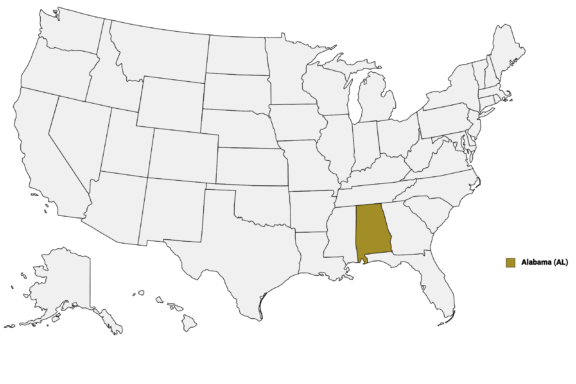
Below is a map of the 67 counties of Alabama (you can click on the map to enlarge it and to see the major city in each state).
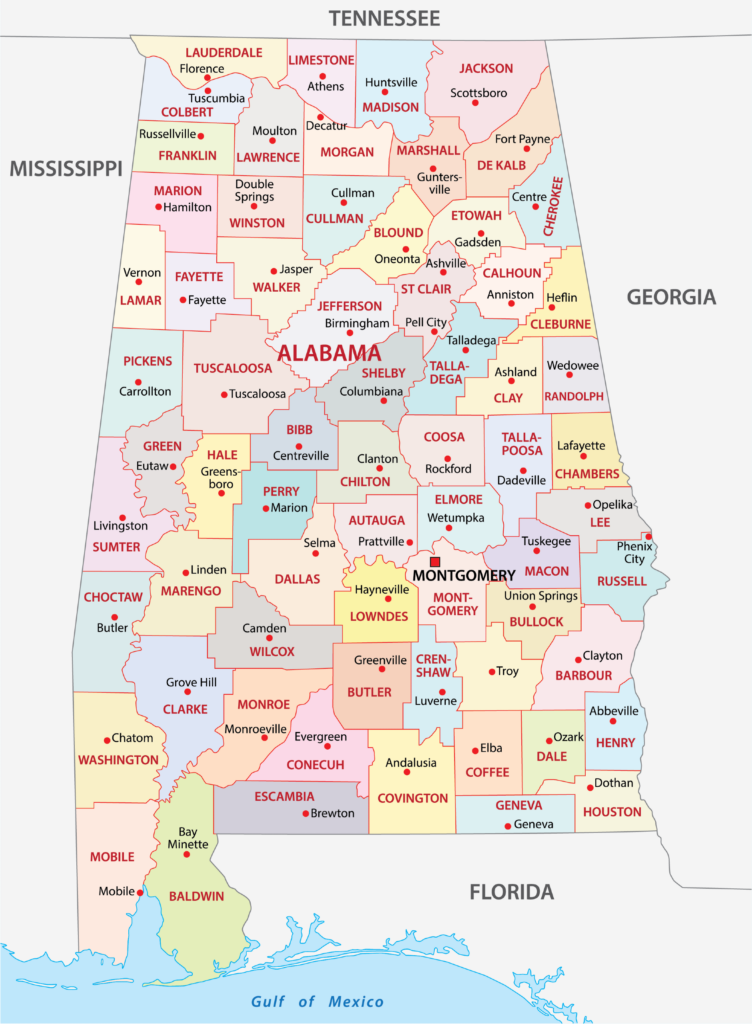
Interactive Map with Population and Largest City
Click on any of the counties on the map to see its population, economic data, time zone, and zip code (the data will appear below the map). Data is sourced from the US Census 2021.
List of the Counties of Alabama:
| County | Population | Per sq. km | Largest City |
|---|---|---|---|
| Autauga County | 58,239 | 37.83 | Prattville |
| Baldwin County | 227,131 | 55.16 | Daphne |
| Barbour County | 25,259 | 11.02 | Eufaula |
| Bibb County | 22,412 | 13.9 | Brent |
| Blount County | 58,884 | 35.25 | Oneonta |
| Bullock County | 10,386 | 6.44 | Union Springs |
| Butler County | 19,181 | 9.53 | Greenville |
| Calhoun County | 116,425 | 74.19 | Anniston |
| Chambers County | 34,834 | 22.55 | Valley |
| Cherokee County | 24,975 | 17.42 | Piedmont |
| Chilton County | 44,857 | 25 | Calera |
| Choctaw County | 12,792 | 5.41 | Butler |
| Clarke County | 23,346 | 7.28 | Jackson |
| Clay County | 14,184 | 9.07 | Lineville |
| Cleburne County | 15,046 | 10.37 | Heflin |
| Coffee County | 53,043 | 30.16 | Enterprise |
| Colbert County | 56,789 | 36.98 | Muscle Shoals |
| Conecuh County | 11,778 | 5.35 | Evergreen |
| Coosa County | 10,442 | 6.19 | Stewartville |
| Covington County | 37,490 | 14.05 | Andalusia |
| Crenshaw County | 13,300 | 8.43 | Luverne |
| Cullman County | 87,129 | 45.79 | Cullman |
| Dale County | 49,443 | 34.02 | Dothan |
| Dallas County | 39,162 | 15.45 | Selma |
| DeKalb County | 71,554 | 35.55 | Fort Payne |
| Elmore County | 87,146 | 54.4 | Prattville |
| Escambia County | 36,879 | 15.06 | Atmore |
| Etowah County | 103,468 | 74.66 | Gadsden |
| Fayette County | 16,365 | 10.07 | Winfield |
| Franklin County | 32,034 | 19.51 | Russellville |
| Geneva County | 26,604 | 17.88 | Geneva |
| Greene County | 7,851 | 4.68 | Eutaw |
| Hale County | 14,819 | 8.88 | Moundville |
| Henry County | 17,165 | 11.8 | Dothan |
| Houston County | 106,355 | 70.82 | Dothan |
| Jackson County | 52,548 | 18.82 | Scottsboro |
| Jefferson County | 672,550 | 233.62 | Birmingham |
| Lamar County | 13,929 | 8.89 | Vernon |
| Lauderdale County | 93,342 | 53.95 | Florence |
| Lawrence County | 33,089 | 18.5 | Moulton |
| Lee County | 172,223 | 109.45 | Auburn |
| Limestone County | 101,217 | 69.79 | Huntsville |
| Lowndes County | 10,334 | 5.57 | Fort Deposit |
| Macon County | 19,490 | 12.36 | Tuskegee |
| Madison County | 382,149 | 184.07 | Huntsville |
| Marengo County | 19,397 | 7.67 | Demopolis |
| Marion County | 29,392 | 15.29 | Hamilton |
| Marshall County | 97,179 | 66.31 | Albertville |
| Mobile County | 414,620 | 130.22 | Mobile |
| Monroe County | 20,115 | 7.57 | Monroeville |
| Montgomery County | 229,072 | 112.62 | Montgomery |
| Morgan County | 122,608 | 81.67 | Huntsville |
| Perry County | 8,702 | 4.67 | Marion |
| Pickens County | 19,240 | 8.43 | Aliceville |
| Pike County | 33,176 | 19.06 | Troy |
| Randolph County | 21,984 | 14.62 | Roanoke |
| Russell County | 58,695 | 35.34 | Phenix City |
| Shelby County | 220,780 | 108.53 | Birmingham |
| St. Clair County | 90,412 | 55.27 | Trussville |
| Sumter County | 12,482 | 5.33 | Livingston |
| Talladega County | 81,850 | 42.89 | Oxford |
| Tallapoosa County | 41,284 | 22.25 | Alexander City |
| Tuscaloosa County | 223,945 | 65.46 | Tuscaloosa |
| Walker County | 65,194 | 31.82 | Jasper |
| Washington County | 15,574 | 5.57 | Leroy |
| Wilcox County | 10,686 | 4.65 | Camden |
| Winston County | 23,650 | 14.9 | Haleyville |
Largest Counties in Alabama by Population
Jefferson County
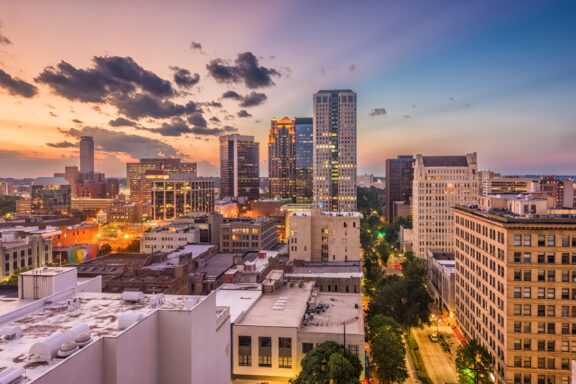
The most populous county in the state of Alabama is Jefferson County, located in the central part of the state. Founded in 1819 the county was named after Thomas Jefferson, the third President of the United States and the main author of the Declaration of Independence.
The county seat and largest city in Jefferson County is Birmingham, which is the third-largest city in Alabama. A city with several nicknames, Birmingham has been called the “Magic City” and the “Pittsburgh of the South” for its rapid growth between 1881 and 1920.
The city later played an important role in the civil rights struggle for African Americans in the 1950s and 60s. Sit-ins and marches were met with violent police repression but ultimately led to the desegregation of public resources in Birmingham as well as the Civil Rights Act of 1964.
Jefferson County has a diverse geography that includes the Watercress Darter National Wildlife Refuge as well as part of the Ridge-and-Valleys Appalachians. The highest point of elevation in Jefferson County is at Shades Mountain, at 250.5 m (1,150 ft).
Mobile County
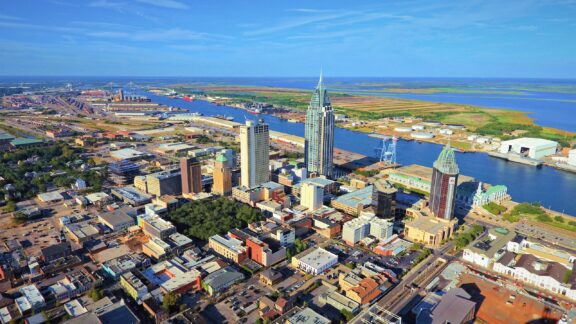
The second-largest county in Alabama by population is Mobile County, which is located in the southwestern part of the state and borders Mobile Bay in the Gulf of Mexico. The county was founded after the War of 1812 when the United States gained control of the land, and the county seat is the city of Mobile, which is the oldest city in Alabama.
Before the arrival of the Spanish in the 16th century, the area of modern-day Mobile County had been inhabited by indigenous peoples for thousands of years. By the time the French arrived, the land was part of the Mississippian culture territories and ruled by Paramount Chief Tuskaloosa. The name of the county comes from the village of Mabila, a fortified village of Tuskaloosa.
The city of Mobile is the county seat and Alabama’s only saltwater port, long playing an important role in supporting the state’s economy. A variety of museums in Mobile, such as the History Museum of Mobile, the Oakleigh Historic Complex, and the Mobile Carnival Museum, serve as some of the tourist attractions in the city.
Madison County
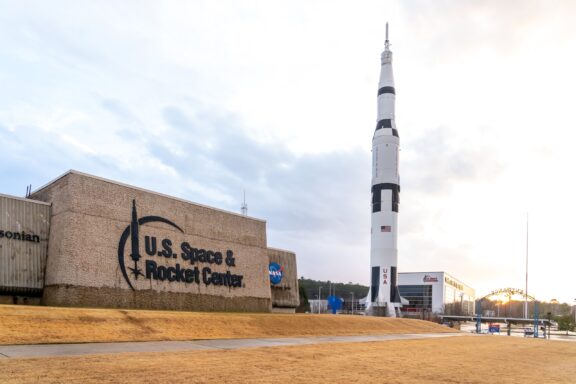
Madison County is situated along Alabama’s northern border, next to the state of Tennessee. The county seat of Madison County is the city of Huntsville, which is the largest in the county and the state in terms of population. The county was founded in 1808 and was named after James Madison, the fourth President of the United States.
Huntsville was the first state capital of Alabama, and Madison County’s economy was largely based on agriculture for much of its history. It was one of the largest cotton-producing counties in the state thanks to its large cotton plantations that were dependent on the labor of enslaved African Americans.
Today, the defense and space industries make up a significant portion of Madison County’s economy. This began with the research and development of rockets beginning in Huntsville in the second half of the 20th century. Huntsville is now home to the second-largest research park in the country.
Visitors to Madison County can enjoy the area’s natural beauty by walking the Madison County Nature Trail, a 72-acre park in southeast Huntsville. Other attractions in the county include the US Space and Rocket Center, the Huntsville Botanical Garden, and the Huntsville Museum of Art.
Montgomery County
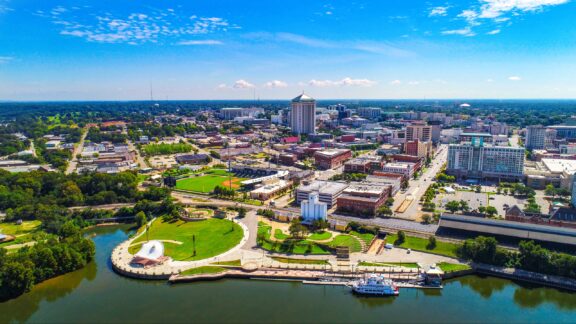
Montgomery County is the fourth-largest county in Alabama by population and is located just southeast of the state’s center. The county was formed through the division of Monroe County in 1816 and covers a total area of 800 sq mi (2,072 km2).
The county seat is the city of Montgomery, named after Richard Montgomery, a general in the American Revolutionary War. The county, however, is named after Lemuel Montgomery, the first US soldier killed at the Battle of Horseshoe Bend.
The city of Montgomery is famously the location of the Montgomery Bus Boycott, which was inspired by the arrest of Rosa Parks and would lead to the U.S. Supreme Court ruling that segregation on public buses is unconstitutional. More information can be found at the Rosa Parks Library and Museum in Montgomery.
Blount Cultural Park is an important cultural location in the county with a beautiful natural setting. It’s home to the Montgomery Museum of Fine Arts, the Alabama Shakespeare Festival, and a dog park.
Baldwin County
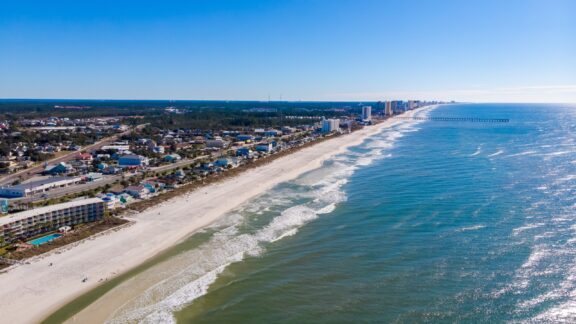
Baldwin County is located on the Gulf Coast in southern Alabama and is the largest county in the state by area. It’s known for its vibrant beach communities, rich history, and natural beauty. The county was established in 1809, a decade before Alabama gained statehood, and it was named after Abraham Baldwin, founder of the University of Georgia.
Gulf Shores and Orange Beach are some of the top tourist attractions in Baldwin County. Some of the most beautiful beaches in the country are located here, featuring white, sandy shores and crystal-clear water. Swimming, sunbathing, fishing, boating, and kayaking are all activities that visitors can enjoy here.
Another notable place in Baldwin County is the city of Fairhope, Alabama. Fairhope is known for its relaxed, artsy atmosphere. Art galleries, cafes, and unique shops lend a bohemian air to the coastal city. The Fairhope Pier, which extends into Mobile Bay, is a popular spot for enjoying the sunset.
Fort Morgan is a historic site on Mobile Bay that serves as a prime example of military architecture during the 19th century. For more local history, the Baldwin County Heritage Museum offers exhibits, artifacts, and interactive displays showcasing the county’s history.
Smallest Alabama Counties by Population
Greene County
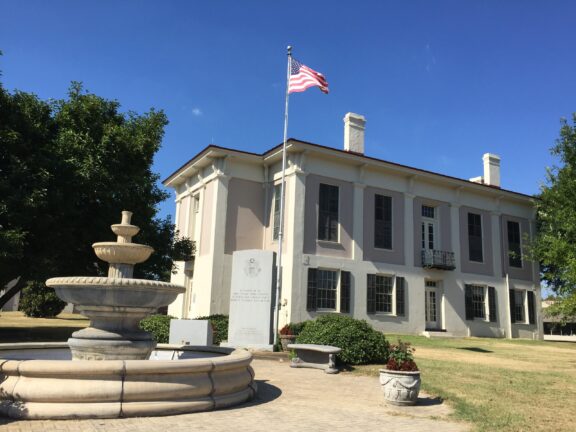
The least populous county in Alabama is Greene County, located in western Alabama. This rural county is known for its African-American heritage, civil rights history, and natural beauty. The county’s name comes from Nathanael Greene, a Revolutionary War General from Rhode Island. It was established in 1819.
The county seat is Eutaw, which was the site of numerous demonstrations and protests during the Civil Rights Movement. Greene County would eventually become the first in the country to have its county commission and school board led by a majority of African Americans.
There are a large number of antebellum homes in Eutaw that are on the national historic register. House tours are sometimes organized to show off their historic architecture.
Perry County
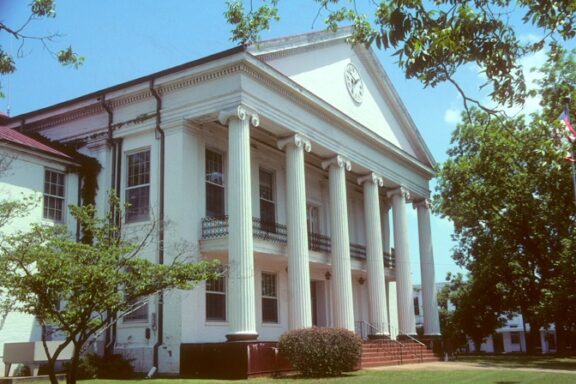
Perry County is located near the center of Alabama and has the second-smallest population of any county in the state. The county’s economy is focused on agriculture, and it has strong historical ties to the Civil Rights Movement. The county is named after Commodore Oliver Hazard Perry, an American naval officer who fought in the War of 1812.
The county seat is the town of Marion where, in 1965, the fatal shooting of a 26-year-old black church deacon named Jimmie Lee Jackson by a state trooper inspired the Selma to Montgomery marches that would lead to the infamous “Bloody Sunday” incident. Marchers were met with violence and the event became a turning point in the fight for voting rights.
In 2008, Perry County voted to establish Barack Obama Day as a holiday celebrated on the second Monday of every November. The holiday was suspended for three years during the COVID-19 pandemic but will return in 2023.
Lowndes County
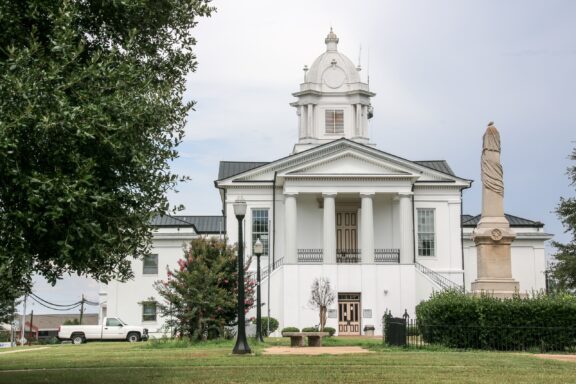
Situated in the south-central part of Alabama, Lowndes County is known for its agriculturally based economy and its historically important role in the Civil Rights Movement. Lowndes County has the third-smallest population of any county in the state; it was founded in 1830 and was named after William Lowndes, a US congressman from South Carolina.
Lowndes County is located in what was historically called the Black Belt for the land’s dark, fertile soil as well as the high number of enslaved African Americans that were made to work on cotton plantations.
The often violent oppression of African Americans by whites earned the county the nickname, “Bloody Lowndes,” and eventually inspired what would become the blueprint for Black Power.
The Lowndes County seat is Hayneville, which has a population of around 1,000. The largest seat in the county is Fort Deposit, which is only slightly larger than Hayneville. The town was named for a fort constructed at the location during the Creek War of 1813-14 and hosts the Calico Arts and Crafts Fair each year.
Wilcox County
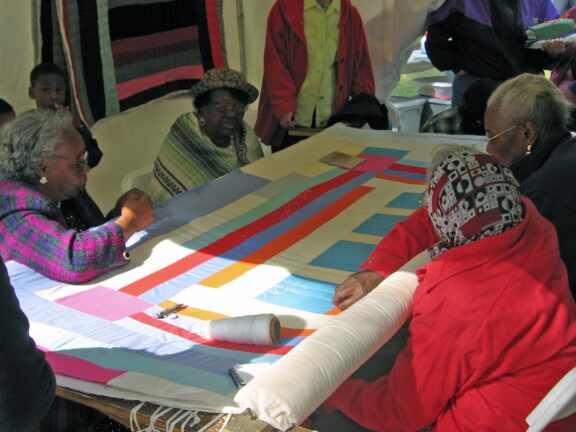
Another sparsely populated county in Alabama is Wilcox County, located in the southwestern part of the state. As part of the Black Belt in Alabama and a historically significant center of cotton production, Wilcox County’s past is closely connected to the legacy of slavery and the experience of African Americans in the antebellum South.
Officially known as Boykin, the Gee’s Bend census-designated area is located in Wilcox County. The rural community has a unique history and is known for the beautiful quilts produced by its residents that have been displayed in museums across the country.
As a predominantly rural area with a limited population, access to some resources is limited in Wilcox County, and economic struggles are not uncommon. The county’s natural beauty, however, is undeniable. The Alabama River and several creeks run through the county, and it has more miles of riverfront than any other county in the state.
Coosa County
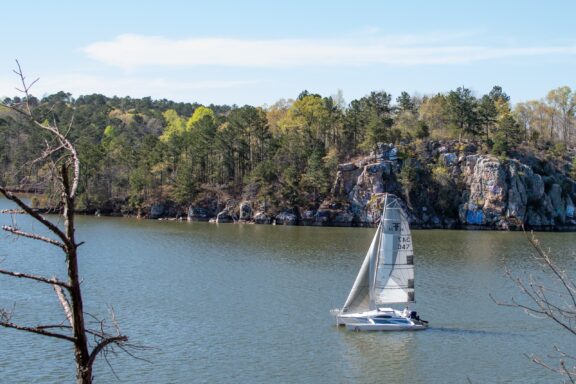
Coosa County had a population of just over 10,000 in 2021, making it the fifth-smallest county in the state by population. The county is located near the central part of the state, and its county seat is Rockford, though Goodwater is its largest town. Coosa County was formed in 1832 from parts of Montgomery and Shelby counties.
The county is situated along the banks of the Coosa River, which makes for an abundance of outdoor recreational opportunities like fishing and boating. Water recreation is possible at Lay Lake, Lake Mitchell, and Lake Martin because of a series of dams created by the Alabama Power Company.
Additional opportunities for enjoying the outdoors are possible with the Alabama Scenic River Trail and the Piedmont Plateau Birding Trail. Rolling hills, forests, and historical sites like Fort Toulouse-Fort Jackson Park complete the county’s landscape.
Notable Alabama Counties
Washington County
Named in honor of the first President of the United States, Washington County is notable for being the oldest county in the state of Alabama. It was originally founded as a county in 1800 as a part of the Mississippi Territory and later became Alabama’s first county.
Before the arrival of Europeans, the area of Washington County was inhabited by indigenous groups such as the Choctaw and Creek peoples. Most of the indigenous peoples were moved to modern-day Oklahoma by the US government in the 1830s, and the area was developed for cotton plantations.
Washington County is located in southwestern Alabama, directly north of Mobile County. It is a dry county, meaning the sale of alcohol is prohibited, except in the county seat of Chatom, which is also its largest town.
Shelby County
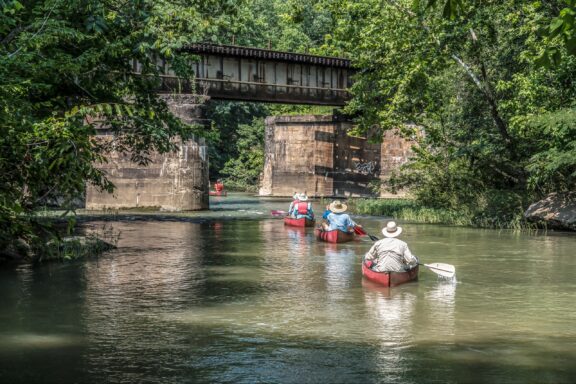
Another notable county in Alabama is Shelby County, located near the center of the state. The county is the wealthiest in Alabama, with most households earning over $74,000 per year and a low poverty rate. Founded in 1818, Shelby County gets its name from Isaac Shelby, the first Governor of Kentucky.
The economy of Shelby County has historically been based on agriculture. Since 1990, soybean production has exceeded cotton production and become the most important crop. The county seat was moved to Columbiana in 1826, and the largest city is Alabaster.
More About Alabama Counties
What is the smallest county in Alabama by area?
The smallest Alabama county by area is Etowah, which covers just 535 sq mi (1,386 km2). Etowah County was established in 1866, and the county seat is Gadsden, Alabama.
Where do most millionaires live in Alabama?
The majority of Alabama’s millionaires live in the Mountain Brook suburb of Birmingham, located in the state’s Jefferson County.
Which county in Alabama is the poorest?
The poorest county in Alabama is Sumter, where the median household income is below $25,000 per year.
What is the fastest-growing county in Alabama?
Limestone County, located in northern Alabama, has the fastest-growing population of any county in the state. It experienced a growth rate of 3.3% between 2021 and 2022.
What is the youngest county in Alabama?
Alabama’s youngest county is Houston County. It was established in 1903 from portions of Henry, Dale, and Geneva Counties and was named in honor of Alabama Governor George Smith Houston.
Image Sources and Copyright Information
- Dusk Over Downtown Birmingham, Alabama, USA: © Sean Pavone/Shutterstock
- Aerial View of Downtown Mobile, Alabama with Skyscrapers and Waterfront: © George Dodd III/Shutterstock
- Sunset View of the U.S. Space & Rocket Center with Saturn V Replica in Huntsville, Alabama: © JHVEPhoto/Shutterstock
- Aerial View of Downtown Montgomery, Alabama with Clear Blue Skies: © Kevin Ruck/Shutterstock
- Aerial View of Gulf Shores, Baldwin County, Alabama with Beachfront and Coastal Cityscape: © Pugalenthi Iniabarathi/Shutterstock
- Greene County Courthouse with Fountain in Foreground, Eutaw, Alabama: © Rudi Weikard/Wikimedia | CC BY-SA 4.0 International
- Classical Revival Architecture of the Perry County Courthouse in Alabama: © Calvin Beale - U.S. Department of Agriculture | Public Domain Mark 1.0
- Lowndes County Courthouse in Hayneville, Alabama on a Clear Day: © Carolyn May Wright/Shutterstock
- Group of Women Engaged in Traditional Quilt Making: © André Natta/Flickr | CC BY 2.0 Generic
- Sailboat Cruising on Lake Martin, Coosa County, Alabama: © JNix/Shutterstock
- Canoeing on the Tranquil Cahaba River Under a Rustic Bridge in Helena, Alabama: © Jeremy Raines/Shutterstock